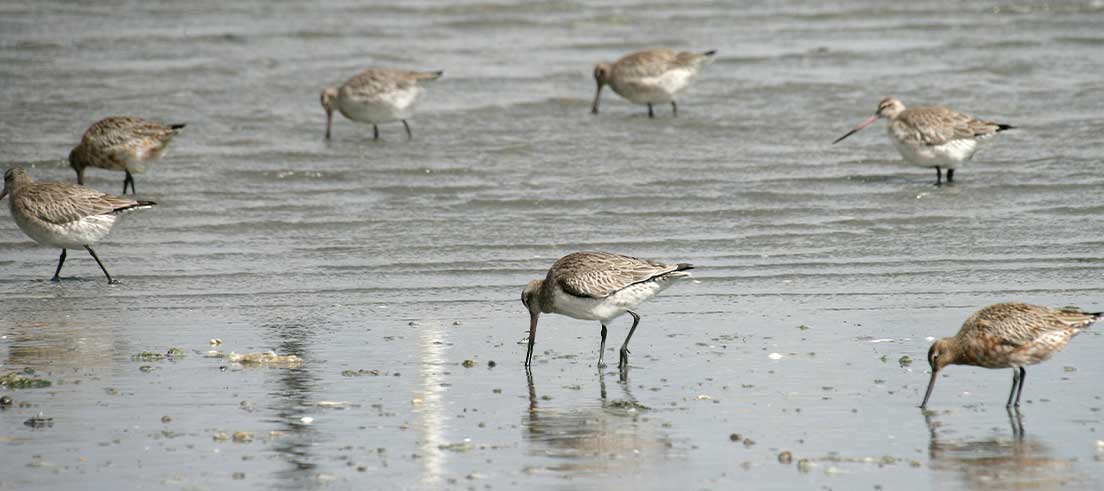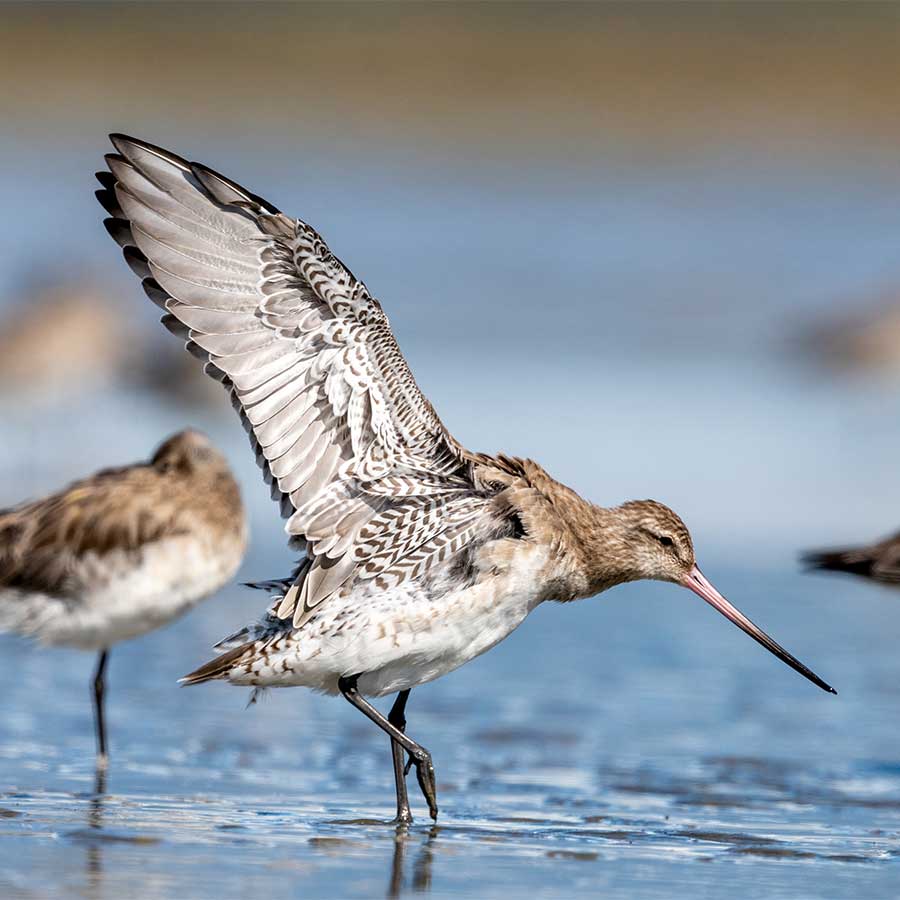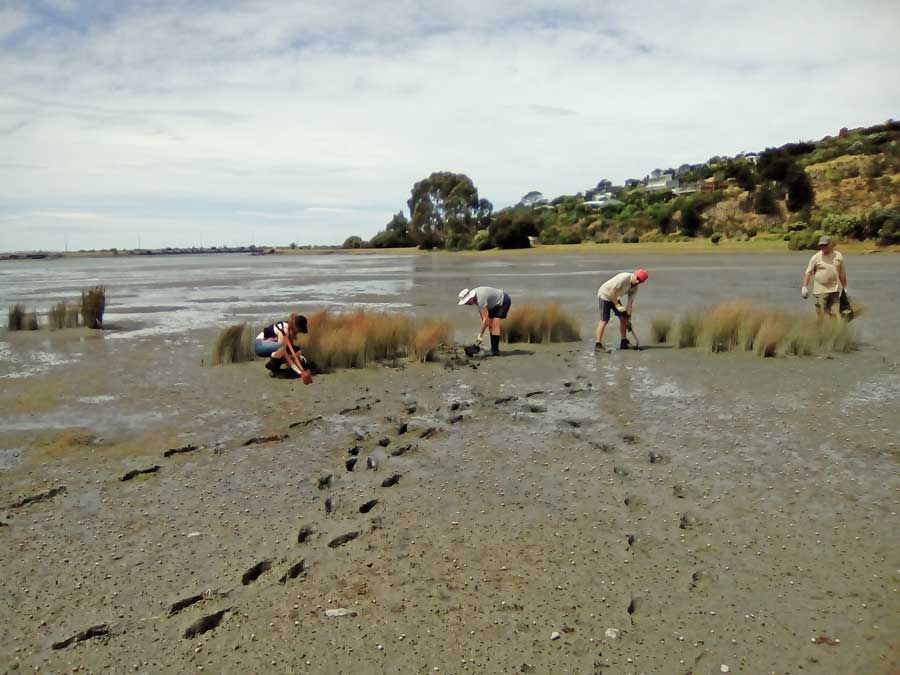
Godwits to depart Canterbury for world’s longest migration
Godwits/kauka are due to depart Canterbury for world’s longest migration, 11,000km non-stop. Will we be ready with a healthy habitat for them to return to?
Over 1,500 bar-tailed godwits/kuaka, a native migratory bird species that summers in Otautahi’s Avon-Heathcote/Ihutai estuary, are due to depart on their annual 11,000km non-stop trip back to Alaska this month.
The godwit/kauka, is one of 35 migratory bird species that travel to Aotearoa each summer. After flying for 8-10 days without rest, they arrive each September to the rich feeding grounds of the estuary’s wetlands. They forage and relax along the coastline until they have conserved enough energy to return north.
Threats to habitats
As a result of habitat loss over recent years, the number of birds returning to our region is declining. While this is mostly due to changes in the Yellow Sea region, the spot where birds stopover during migration to refuel, it’s important that our estuary remains a safe place for the godwits to return to.
Contaminants like rubbish and pollutants in stormwater have a big impact on the health of the estuary and threaten the habitat of the godwit/kuaka.
“Our estuary plays a vital role in the survival of our many bird species who reside and migrate,” said Tanya Jenkins, Manager of the Avon-Heathcote/Ihutai Estuary Trust.
“Mud-dwellers like cockles, pipi, fish, crabs, worms, invertebrates, and plants in the estuary all provide food to suit the different birds. Pollutants from stormwater run-off and microplastics cause these mud-dwellers to consume heavy metals which in turn are eaten by birds.”
The Avon-Heathcote/Ihutai Estuary Trust looks after the health of this ecosystem to ensure that taonga like the godwit/kuaka continue to thrive in our region.
Cleaning up our estuary
Rubbish in the estuary is a big problem for foraging birds like the godwit/kuaka.
Littered items discarded in the area can be mistaken for food and cause birds to choke.
Small bits of rubbish, when ingested, can also cause a build-up in their gut leading to starvation.
The Trust recently supported student Emma Hunter in research about pollutants which found significant amounts of plastic pallets known as “nurdles” in the estuary.
These findings allowed our staff to mobilise and offer advice to the parties responsible for accidentally discharging this waste plastic into the environment.
Read our latest news about microplastics: Blitzing nurdles and other microplastic foes
Reminder about stormwater and pollutants
One thing we can all do to help keep the estuary safe and healthy for the godwits/kauka is to be mindful of how we treat our local stormwater system. Stormwater is water that runs off hard surfaces like roofs, driveways, footpaths and roads. In urban areas of Canterbury, stormwater drains (the grated drains you see on the side of the road) lead directly into our streams, rivers and ocean—untreated.
Stormwater often carries nasty pollutants like chemicals rubbish into our precious costal ecosystems.
Find out the simple ways you can protect our stormwater and help the Trust keep our Avon-Heathcote/Ihutai estuary safe for the return of the godwits next summer.
Conservation efforts in the estuary
We support the Avon-Heathcote Estuary Ihutai Trust to deliver the Estuary Management Plan 2020-2030, a commitment to work toward restoring the mauri (life force) of Te Ihutai, to restore the estuary to full ecological and cultural health.
With this resource, the Trust is able to do extensive work in educating the region about the importance of the estuary’s ecology. Their work includes:
- hosting events to engage local communities
- working with other like-minded conservation groups
- funding scholarships for students to research things like water quality, invertebrate presence, and bird disturbance; and,
- making submissions to Long-Term Plans for local councils.
Tanya Jenkins notes that the management plan allows the Trust to measure progress in their conservation efforts.
“Through meeting the objectives laid out in the plan, we ensure the continued presence of all bird species, including the godwit/kuaka, who serve as an indicator of a healthy estuary.”


